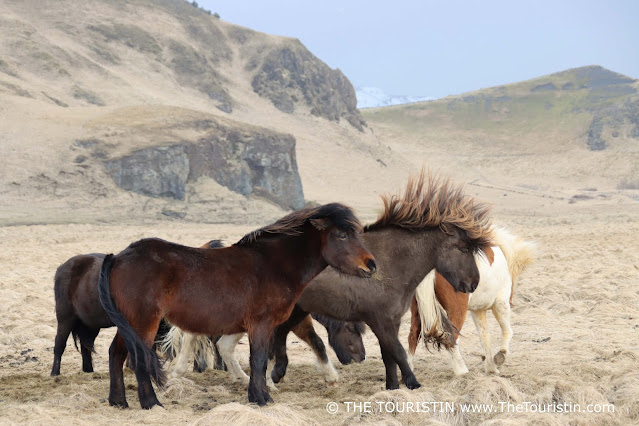This Iceland guide is full of information and travel inspiration for first-time visitors to Iceland. Leaving Iceland is like a return to the real world, it is this beautiful. Iceland is blue icebergs, untouched, wide, and wild open space, long distances, lonely roads, snowy mountain tops, majestic glaciers, glacier lagoons and lakes, black endless beaches, boiling water and steam, the rough North Atlantic Ocean, mystic rock formations, lava fields, wildflowers and moss, cliff edges, birdlife and seals, sturdy and cute Icelandic horses, reindeers, and sheep. You find Iceland on the boundary between the North American and Eurasian tectonic plates. Only about 366,450 people call Iceland home and you can add millions of tourists who love Iceland to that number.
There is sunshine, gale force winds, light rain, heavy rain, the howl of sideways rain, and snowstorms, and as a result, magnificently, constantly changing light. One can experience all that often all in one single day. The road will take you to natural wonder after natural wonder. In Iceland, the splendour is as endless as the daylight in summer or the darkness in winter. The wonder never stops.
Travelling through the country one can well imagine that it is a struggle to survive in these harsh conditions. There have been over 200 volcanic eruptions ever since settlers arrived in Iceland. One would surely do everything to keep it this pristine. There are hardly any power poles, no large street signs, and outside of Reykjavik sort of no traffic lights that disturb magnificent views. The whole of Iceland looks otherworldly.
Travel Iceland – First-time visitors guide
Reykjavik in Southwest Iceland
Reykjavík, inhabited since 874 AD, has many old buildings with colourful roofs. Relics of the town's Viking and medieval past are still there. The streets are hilly. You also have contemporary design. There is the sleek Harpa Concert Hall and the impressive Hallgrímskirkja Church. Walk towards the harbour to see the concert hall Harpa. Harpa is Reykjavik's most stunning landmark by the harbour. In Icelandic, it is a month in spring in the old Nordic calendar. Also, Harpa is the Icelandic name for the harp. Then there is a thriving bar and restaurant scene, and lots of street art. All that with a fine view over the harbour and surrounding mountain ranges.
Strokkur and Geysir in Southwest Iceland
Go for a walk, the ground is yellow from sulphur, green from copper and red from iron. You can see fumaroles, hot springs, mud pits and smaller geysers up close. Geysir lent its name to all other geysers in the world. That makes Geysir the mother of all geysers. Geysir and Strokkur are neighbours. Whereas Geysir is at rest most of the time, Strokkur erupts every five to ten minutes. It blasts water to heights of around fifteen to twenty metres into the grey (sometimes blue) sky - on time like a Swiss train. Active geysers are only found in geothermal areas. They can only erupt if there is enough heat and water around. In this area, the source of flowing underground water is the glacier Langjökull. Its meltwater sinks into porous lava rock and travels underground and in all directions. In Iceland, magma is close enough to the surface of the earth, so that the rocks are hot enough to boil the water. Standing close to Geysir and depending on from where the wind blows, standing in the mist feels like being in a giant steam bath.
Gullfoss in Southwest Iceland
The Golden Falls, in Icelandic Gulfoss, sit at the Hvítá River, which travels from the glacier Langjökull. The water cascades 32 metres down Gullfoss into the 70 metres deep Gullfossgjúfur canyon. After you look at the falls for a while you begin to be as soaked from the waterfall's spray as a lemon sponge cake. The water is ice cold, everything in Iceland feels so dramatic. One is so close to nature.
Seljalandsfoss in South Iceland
You can walk behind the Seljalandsfoss. It is slippery though. Feeling the spray of the waterfall on your skin and hearing the sound of water dropping 60 meters down is a truly remarkable experience. Imagine that this was once the coastline. Today the coastline is nine kilometres further away due to Volcanic activity. Speaking of volcanos. Do you remember the volcano that erupted and stopped the world in 2010? Seljalandsfoss waterfall comes from the volcano beneath the glacier Eyjafjallajökull.
Dyrhólavegur and Dyrhólavegur Lighthouse in South Iceland
Door Hill Island, in Icelandic Dyrhólaey, was an island. It is now joined with the mainland due to volcanic eruption. On its cliff, it feels as if you are on top of the world.
The light of the white square lighthouse of Iceland's most southerly point shone first in 1927. The view from up here, over the North Atlantic Ocean, over the endless black beach, over the cliffs, and towards the mountain ranges in the far distance, is probably going to be one of the best you will have in your entire life.
Hálsanefshellir Cave on Reynisfjara in South Iceland
With the Reynisdrangar rock formations, the story goes that trolls waded out to enter a ship they saw on the Atlantic Ocean. They began to drag it to shore. Not even close to shore, dawn broke, and that meant bad news for the trolls. The ship and trolls were frozen into stone. The poor trolls - good for us visitors. It is a magnificent place.
The basalt columns of the Hálsanefshellir cove are impressive, beautiful, stunning… call them what you like, and it is true. The downside is that it is dangerous to visit them, or better it can be dangerous to visit them. There are signs that warn you in detail about sneaker waves, and there are masses of visitors who happily ignore them. Please take the warnings seriously. People drowned here. Icelanders don’t want any more tourists to die.
Vík í Mýrdal in South Iceland
This is the southernmost village in Iceland. Vik is not only beautiful with a long black beach, colourful cottages by the Atlantic Ocean, and a white, red-roofed church on top of a hill it is also the wettest place in Iceland. Visit for a few days, you are going to love it.
Skeiðará Bridge Monument in South Iceland
1996, the volcano Vatnajökull erupts. Melted glacier parts create massive floods. Iceland's longest bridge, the Skeiðará Bridge, part of the ring road that travels around Iceland, is built to withstand floodings. It doesn't. Icebergs run down the vast plains towards the Atlantic Ocean. The pressure on the bridge is too great. It collapses. No engineer was able to foresee this, nothing like this has happened before. The bridge wasn't designed strong enough for this type of event. Parts of the ring road, and with that the Skeiðará bridge, were all destroyed. Stop here to see remnants of the bridge, and to see how powerful nature's force can be.
The view from the Skeiðará Bridge monument toward Iceland's highest mountain Hvannadalshnúkur, the Svínafellsjökull (Glacier), and the Skaftafellsjökull (Glacier) is one of a kind.
Skaftafellsjökull in Skaftafell Nature Reserve in South Iceland
When it snows and snows and the snow does not melt for a few years, glaciers are formed. It is incredible to look at glaciers up close. Extraordinary. Special. You stand facing the glacier and see it in all its rugged and jagged vast glory. When it is all quiet, you can hear a cracking sound.
Follow the Skaftafelljökull Trail to reach Skaftafellsjökull. It is a fact that glaciers retreat rapidly due to the climate crisis. In Skaftafell the glacier gets closely monitored ever since 1930. Every autumn the distance to the glacier terminus gets measured from a reference point. The changes monitored here over the last decade are immense. Skaftafellsjökull is sadly a superb example of how the climate crisis is threatening Iceland's glaciers.
Svartifoss in Skaftafell Nature Reserve in South Iceland
In Skaftafell National Park you can find birch forests, lava, rivers and streams, glacier tongues and lagoons. Make your way to the Svartifoss (waterfall) with its hexagonal dark grey-black basalt columns. The grey-black basalt columns behind Svartifoss make this a most impressive place to visit. The 20 metres high basalt columns stand in front of you like organ pipes. There is no play of organ music but the rushing sound of water. Talking about organ music. Hallgrímskirkja in Reykjavik, with its 15 metres tall organ, is inspired by the columns of Svartifoss.
Fjallsárlón Glacier Lagoon in South Iceland
11% of Iceland is glaciers, and because of the climate crisis, they grow smaller all the time. As the glaciers grow smaller, lagoons become larger. This is one more example of the power of nature. The Fjallsárlón glacial lagoon is located on the southern end of the Vatnajökull glacier. Massive icebergs, broken off the ice, come in all shapes and sizes and drift around in the vast space of the lagoon.
Breiðamerkursandur in Southeast Iceland
Diamonds on a beach? Yes, on a black beach.
Breiðamerkursandur is a beach that stretches almost 18 kilometres from the Kvíárjökull glacier all the way to the Jökulsárlón glacial lagoon. Breiðamerkursandur, which tourists call Diamond Beach, is located directly at the mouth of the Jökulsá á Breiðamerkursandi.
You find icebergs on Diamond Beach, which journeyed down the Jökulsárlón glacial river into the ocean. Here they come to rest on the beach. They dip into the cold Atlantic, and sometimes they drift back onshore. Big and small icebergs, lapped gently by waves. They remind you of oversized diamonds. Nature puts on a good show here. The iceberg's glittery look is enhanced enormously by the black of the lava beach. Are diamonds forever? No. Some of them are over 1,000 years old, and that is almost as long as forever. This place is precious.
Jökulsárlón in Southeast Iceland
Come here to look at blue icebergs floating around. Some icebergs are bright white. The icebergs break off from the Breiðamerkurjökull glacier. The blue colour stems from the compression of the ice. There are no air bubbles left in the ice, so it is rather compact. A few of the icebergs you will see are about 1,000 years old (and more of them on the beach). Jökulsárlón, being 248 metres deep, is the largest lake in Iceland, and the more Breiðamerkurjökull melts, the larger it gets in size.
Can you swim in Jökulsárlón glacial lagoon, as Justin Bieber did in his video? Yes, you can, but only if you are a seal. Watch closely and you are going to see seals swimming all around the icebergs. For humans, it is a clear no, you can't swim in Jökulsárlón.
Möðrudalur in East Iceland
In Möðrudalur you can see houses in the turf house style. This is how Icelanders traditionally built their homes. In the centre, there is a small church. The white, red-roofed structure was built in 1949 by the then resident farmer in memory of his wife. The family that lives on the farm started farming in 1874 and has hence lived on the site for almost 150 years. Today, they also run a café and restaurant where they offer meals made with locally sourced products. If you like you can stay at their campground or in chic hotel-style accommodation. All of these come with a to die for view. In all this, you can feel the love the owners have for this place. Visit Fjalladýrð for more information.
Coordinates: N65° 21' 8.955" W15° 46' 46.665" Please make sure to not follow google blindly and to always check for road conditions before you go somewhere (especially in winter/spring).
Dettifoss in North Iceland
Dettifoss starts its journey from Vatnajökull, the largest glacier in Europe, and on its way, it becomes the strongest waterfall in Europe. Vatnajökull is a National Park, and Dettifoss, with a drop of 45 metres and 100 metres wide is a sheer force of power.
Goðafoss in North Iceland
There is this large plain and the river that leads to the so-called Waterfall of the Gods. One can't help but expect cowgirls to appear on the horizon at any moment. The water of Skjálfandafljót falls down at a height of 12 and a width of 30 metres. Back in the days, in the 9th and 10th centuries, locals worshipped deities. Freya and Thor and Odin are all part of the Norse religion. The story goes that a (lawmaker/priest) chief threw his former pagan idols into the falls as soon as he converted to Christianity, to keep peace in his community. A walking path that leads along the falls allows looking at the spectacle from different angles.
Siglufjörður in North Iceland
Siglufjörður is a picture-perfect looking little town with only a few rows of streets full of colourful houses. Iceland's northernmost town sits on a Fjord with the same name. Ever since the town was first officially established in 1918 it grew to a population of 1,300 locals. Siglufjörður's harbour is only 40 km south of the arctic circle. East of town is Tröllaskagi peninsula, with the tallest mountains in Iceland, of whom many are more than 1,000 metres.
Grundarfjörður on the Snæfellsnes Peninsula in West Iceland
Grundarfjörður is a town on the north coast of the
Snæfellsnes Peninsula. Only 872 people live here permanently - this is the
ideal place to stop for a hot soup or homemade cake and see how locals live.
Kirkjufellsfoss and Kirkjufell on the Snæfellsnes Peninsula in West Iceland
Take me to Kirkjufell, or Church Mountain in Icelandic. The mountain Kirkjufell is 463 metres high. There is a mountain range in the distance, a lake, streams, a view of the North Atlantic and a three streamed waterfall, the Kirkjufellsfoss. You guessed right. The view towards Kirkjufell from Kirkjufellsfoss is out of this world magnificent.
Street Art in Hellissandur on the Snæfellsnes Peninsula in West Iceland
Hellissandur is Iceland's street art capital. This all happens in what feels like a hidden and remote place on earth. The town is directly next to the Snæfellsjökull National Park, from where one has a perfect view of the Snæfellsjökull volcano and glacier. And then this. Over 30 murals are on the walls of an old fish factory and in various locations around town. Hellissandur used to be the centre of fishing - not anymore. When you leave town, have a look at the Hellissandur Longwave Radio mast. You can't miss it - it is a super-sized giant structure.
Lóndrangar on the Snæfellsnes Peninsula in West Iceland
There are no castles in Iceland. The 61 and 75 metres high basalt stacks of Lóndrangar in the Snæfellsjökull National Park come very close to one (in design).
Trails above the ocean lead through Lava fields overgrown with moss directly to the pillars that once were a volcanic crater. Follow the trail to reach the Þúfubjarg cliffs to look at the coastal scene and the pillars and birdlife.
Snæfellsjökull Volcano on the Snæfellsnes Peninsula in West Iceland
The Journey to the Centre of the Earth by Jules Verne starts here in this exact place. Volcanic tubes can reach the centre of the earth, isn't it? Professor Otto Lidenbrock, a scientist, and his nephew Axel together with their Icelandic guide Hans travel into Snæfellsjökull to find out whether it is true. See where all of it started.
Hellnar and Arnarstapi on the Snæfellsnes Peninsula in West Iceland
The oldest written record of seafaring in Hellnar is from 1560. About 150 years later they were already 38 houses in the area. Over the centuries, locals moved away, and the area became quite lonely. This is the exact reason Hellnar is so pretty to visit.
At the time, the Danish, who had formed a union with Iceland, were more interested in neighbouring Arnarstapi. They rather invested their time and money there. Over time locals decided to be better off in Reykjavik and moved away. After Iceland's independence in 1943, Arnarstapi was rediscovered as a travel destination. To this day, fishing is still important to the economy.
Búðir and Búðakirkja on the Snæfellsnes Peninsula in West Iceland
Dunes that lead to the sea, the beach and the North Atlantic, snow-capped mountains on the horizon, seemingly indefinite lava fields. You are right by the North Atlantic Ocean and next door to the black church Búðakirkja. Snæfellsjökull volcano is only a short drive away. There is this hotel. Hótel Búðir. It is probably a challenge to find a location as spectacular as that of Hótel Búðir anywhere else. Only a few steps from the hotel is the black Búðakirkja.
Seal Watching in Ytri Tunga on the Snæfellsnes Peninsula in West Iceland
In the past, Icelanders hunted seals for their survival, they were after their meat, fur, and fat. Then seals were also seen as a pest and killed for the negative impact they made on the fishing industry, as in stealing fish, and damaging fishing equipment. These days are over, and seals are there for all to admire from afar. Seals come ashore for hours every day. In order to regulate their body temperature, they have to spend time on land. One can very well imagine how cold it is to spend some time hunting in the water of the North Atlantic. Visit the golden sand beach of Ytri Tunga to watch groups of seals lying on the rock formations.
Please do not feed the seals. Please do not touch the seals. Please be quiet around the seals. Please do not buy products made from seal fur.
Read How to be a delightful tourist in Iceland for more inspiration.
Visa requirements for Iceland
Iceland is a member state of the Schengen Area, and you can apply for the Icelandic Schengen Visa. Visitors from Schengen countries do not need a passport or visa, only a valid an ID-card or passport. Visit this website to see whether you need a Visa to visit Iceland.
How to get to Iceland
By plane: Many European airports offer direct flights to Reykjavik. Keflavik Airport is about 45 kilometres from the centre of Reykjavik. You can take a public bus or rent a car and reach Reykjavik in under one hour.
How long should I visit Iceland?
Do you visit places, take a few photos, and are on your way to the next highlight? Good news, there are enough highlights in Iceland that are easy to reach and that you can visit quickly. If that is what you envision for your trip, two weeks are certainly enough to see many sights along Iceland's ring road.
If you want to look around and experience the sounds and smells of nature, look at birds and seals, and find reindeers, calculate some more time. As always in life, it depends on what you like to do and on what you are interested in.
All places I recommend visiting, I saw in fourteen days. At times it all felt too rushed, and I recommend 21 days as more suitable for this itinerary.
Best time to visit Iceland – The weather in Iceland
You can visit Iceland all year round. Just bring the right clothes and you can enjoy yourself. Temperatures in Iceland vary according to the season. From November to April, it is winter. Winters are cold with minus five to minus ten degrees Celsius on average– the wind might make it feel even colder than it is. Spring is rainy and can be snowy and still cold with temperatures around zero to five and up to ten degrees Celsius. This is when the whales arrive. They come to Iceland from southern waters in search for food from April to October. Summer has temperatures around 12 degrees Celsius. There will be only a few days in summer when it is around 20 degrees Celsius. Come autumn at the end of August, it gets cold and fast with more storms coming in and temperatures around zero to five and up to ten degrees Celsius.
In all seasons, what you will experience is that there is almost ever a strong breeze, and it can go from rain to sunny to snowy to gale force stormy, to foggy and sunny again in one day. In winter, you have the Northern Lights, and in summer, you have the midnight sun.
What to wear in Iceland?
To be on the safe side, pack this. It can be windy, sunny, it can rain and snow. And all that in one day:
Long underwear.
Winter hiking pants.
Jumper.
Wind proof / rain proof jacket.
Rain pants (just in case; the case will come though).
Sturdy shoes.
Scarf, beanie, gloves.
If you go to restaurants or cafes or museums and galleries just dress as you would normally dress at home. No need to wear outdoor clothing you would wear on an excursion to the Arctic obviously.
It is gross enough having to look at bum cleavage peeking out of old jogging pants. Also, now, many tourists wear just socks at hotel restaurants and cafés. Really? Why would one bother others with smelly feet and worn socks? Put on shoes and clothes, please. People might think this is cool or laid-back but it is just not.
Iceland – Currency and how to pay
The official currency in Iceland is the Icelandic Krona. In general, contactless payment is normal. Credit cards are widely accepted. You won’t need cash at all. As in never.
What to read? Books that transport you to Iceland
-The Woman at 1,000 Degrees by Hallgrímur Helgason.
-Independent People by Halldor Laxness.
-Miss Iceland by Auður Ava Ólafsdóttir.
-25 Icelandic Folk and Fairy Tales by Jón R. Hjálmarsson.
From Berlin with love

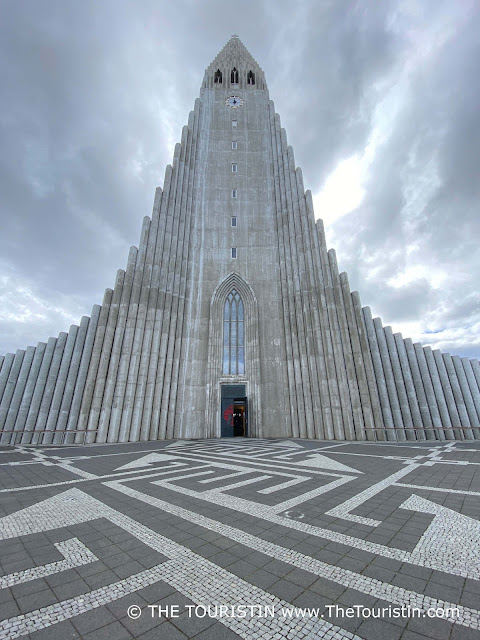
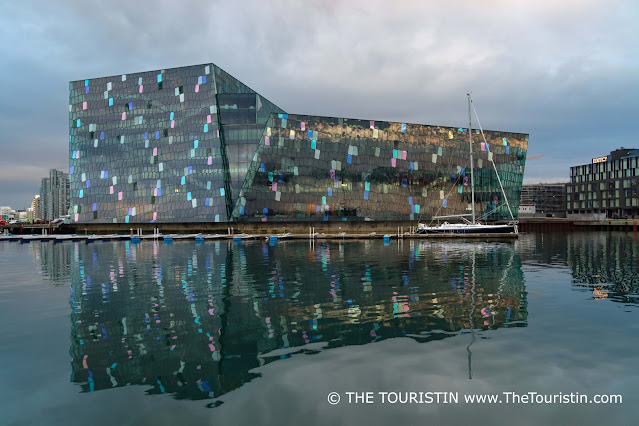

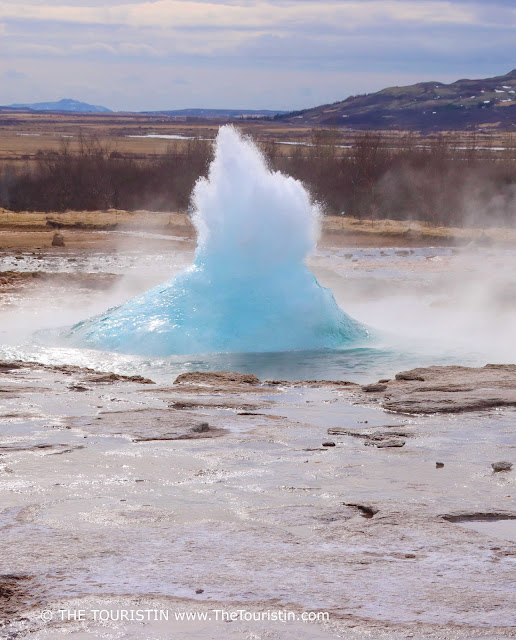



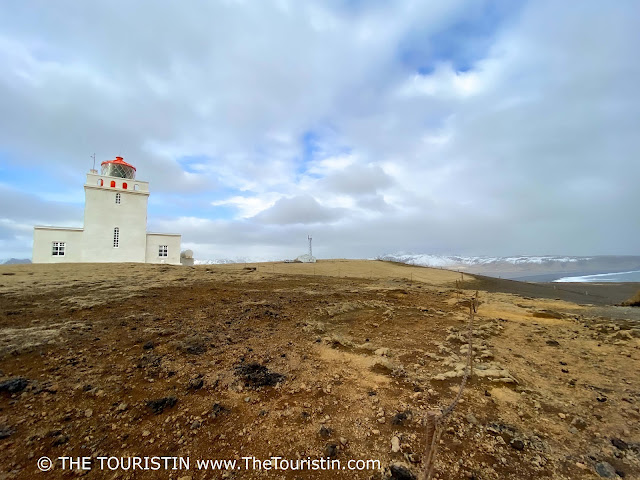
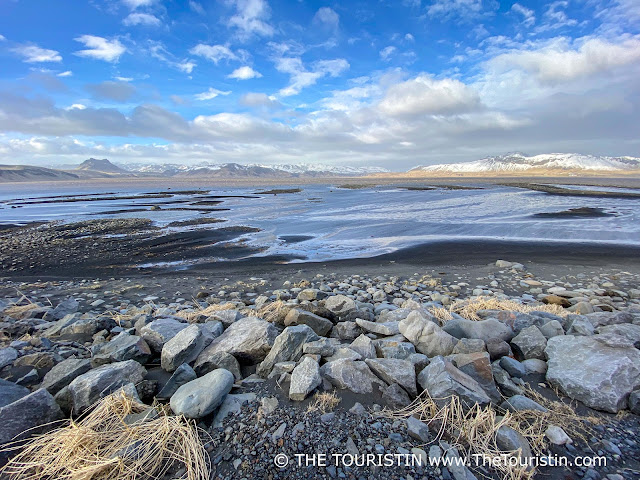


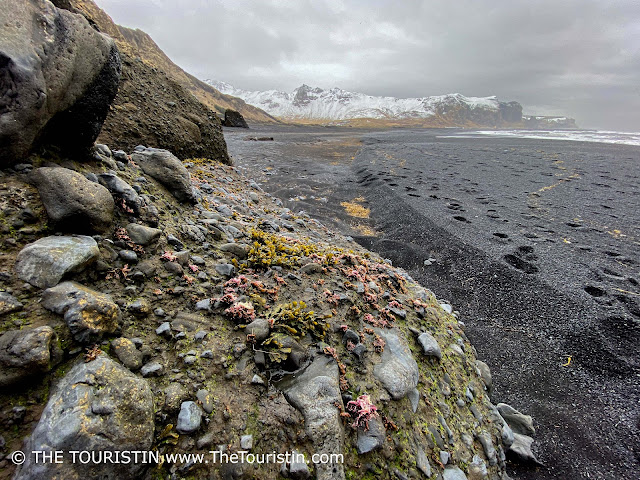
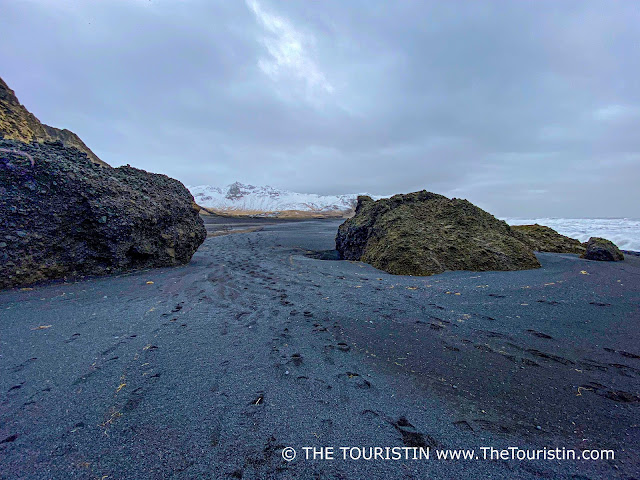

.jpg)
.jpg)
.jpg)
.JPG)
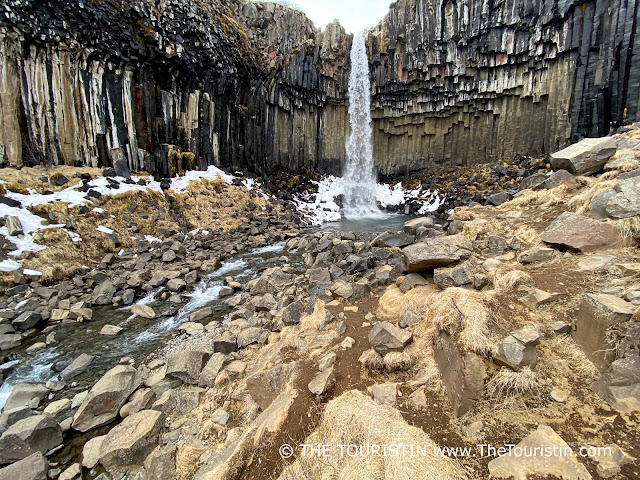



.jpg)
.jpg)
.jpg)
.jpg)


.jpg)
.JPG)
.JPG)
.jpg)
.JPG)
.JPG)
.jpg)

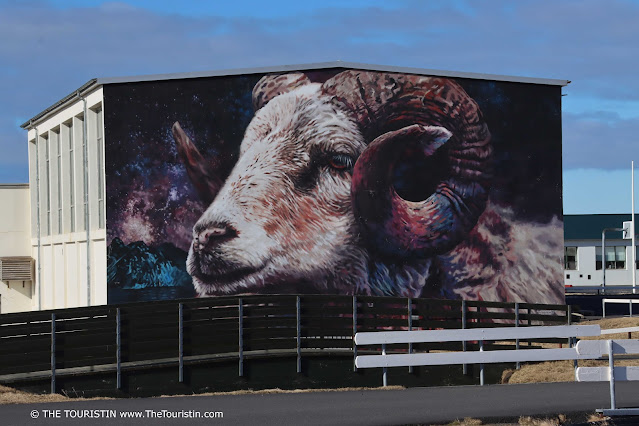


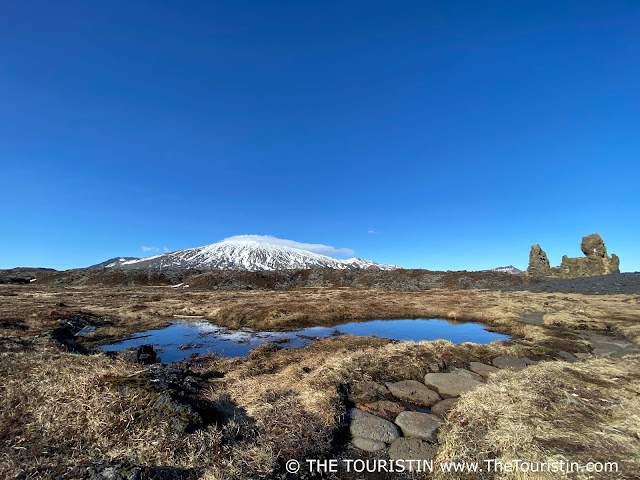

.JPG)
.JPG)
.JPG)
.JPG)
